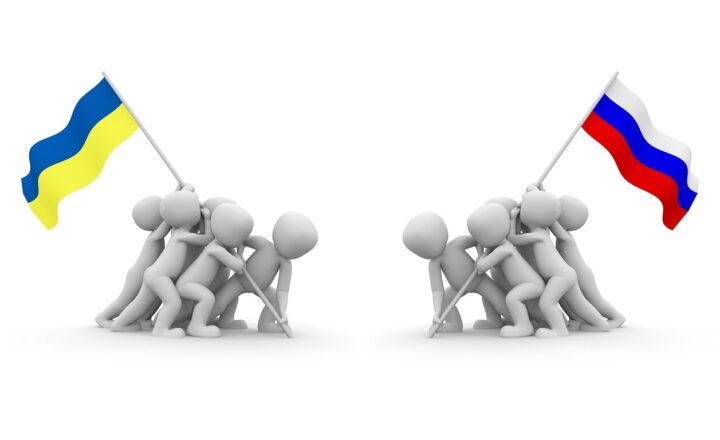The Great Outdoor Legacy: 7 Historical Conflicts That Changed Travel
November 19, 2024

Travel has always been an integral part of human experience, offering adventure, cultural exchange, and opportunities for personal growth. However, throughout history, conflicts have significantly influenced the ways we travel, shaping borders and altering routes. From wars to treaties, the impact of conflict on travel has left an indelible mark on the legacy of exploration and adventure that we know today. In this article, we’ll explore seven major historical conflicts that have changed travel forever.
1. The Peloponnesian War: Navigating Greek Waters
The Peloponnesian War (431-404 BC) was a protracted conflict between the city-states of Athens and Sparta. This ancient war not only altered the political landscape of Greece but also deeply affected maritime trade and travel in the region.
With Athens controlling the sea, the conflict created a divide in the Mediterranean, making travel susceptible to piracy and naval blockades. Many trade routes were severely disrupted, forcing merchants and travelers to seek alternative paths or suffer the consequences. This fragmentation of travel reflected the huge political shift occurring within the Greek world, shaping subsequent views of safety and security in maritime endeavors.
2. The Crusades: Pilgrim’s Path & Cultural Exchange
Between the 11th and 13th centuries, the Crusades resulted in a series of religiously sanctioned military campaigns aimed at reclaiming the Holy Land. Though often marked by violence and conflict, the Crusades also served to establish important travel routes for pilgrims and traders alike.
The movement of people during this period led to greater interaction between different cultures, setting the stage for the emergence of travel as we know it today. Additionally, these conflicts opened new roads and pathways, fostering pilgrimage routes that endure even in modern times, contributing significantly to the tourism industry.
3. The Spanish Reconquista: Conquest and Connectivity
The Reconquista (718-1492) was a period of nearly 800 years during which various Christian kingdoms sought to reclaim the Iberian Peninsula from Muslim rule. This prolonged conflict not only reshaped territorial boundaries but also resulted in significant advancements in navigation and travel.
The demand for exploration and the desire for new trade routes led to innovations in shipbuilding and navigation techniques. The conclusion of the Reconquista laid the groundwork for the Age of Exploration and voyages that ultimately led to the discovery of new lands and the expansion of global travel networks.
4. The Napoleonic Wars: Continental Disruptions
The Napoleonic Wars (1803-1815) caused widespread upheaval across Europe, leading to the first instances of travel restrictions due to war. Napoleonic policies disrupted trade routes, and the European landscape changed drastically.
Travel during this period became more complex and often hazardous, as borders shifted and alliances shifted more frequently. The rise of nationalism resulted in greater awareness regarding national identity and influences on travel, considerably impacting the modern travel infrastructure we witness today.
5. The American Civil War: Railroads and the West
The American Civil War (1861-1865) was a transformative conflict that not only reshaped the nation but also revolutionized travel via railroads. Prior to the conflict, rail travel faced numerous challenges; however, the war accelerated the development of rail infrastructure.
Post-war, the United States witnessed a surge in railroad expansion, opening up vast territories in the West to travelers and settlers. This expansion also played a pivotal role in the so-called “Manifest Destiny,” enabling Americans to explore and inhabit new lands, forever changing the American travel landscape.
6. World War I: A New Era of Travel Regulations
World War I (1914-1918) imposed several international travel restrictions and heightened security measures. The consequences of this global conflict led to the establishment of passport controls and border security protocols that still influence international travel today.
After the war, the desire to travel became a symbol of peace and progress. Travel agencies and commercial airlines began to arise, marking the transition from a privileged few to mass travel as we know it today, shaping tourism into a global industry.
7. The Cold War: Iron Curtains and Open Roads
The Cold War (1947-1991) was characterized by ideological conflict and territorial divisions between the Eastern and Western blocs. Travel between these territories was often restricted and controlled, resulting in a unique dichotomy in travel experiences.
While citizens of the Eastern bloc faced numerous restrictions, Westerners enjoyed more open borders. This period saw the rise of alternative travel routes, such as the emergence of clandestine journeys and increased travel by non-state actors. The legacies of these challenges significantly shaped modern travel, leading to a new era of challenges and opportunities.
Conclusion
Conflicts throughout history have significantly altered the landscape of travel, shaping routes, fostering exploration, and influencing cultural exchange. From the ancient world’s maritime conflicts to the present-day complexities of international travel, the legacy of these historical events is evident in our contemporary experiences of travel. Understanding how conflicts have shaped our travel habits can deepen our appreciation for the journeys we undertake today, making travel more than just a physical movement—it becomes a reflection of history itself.







